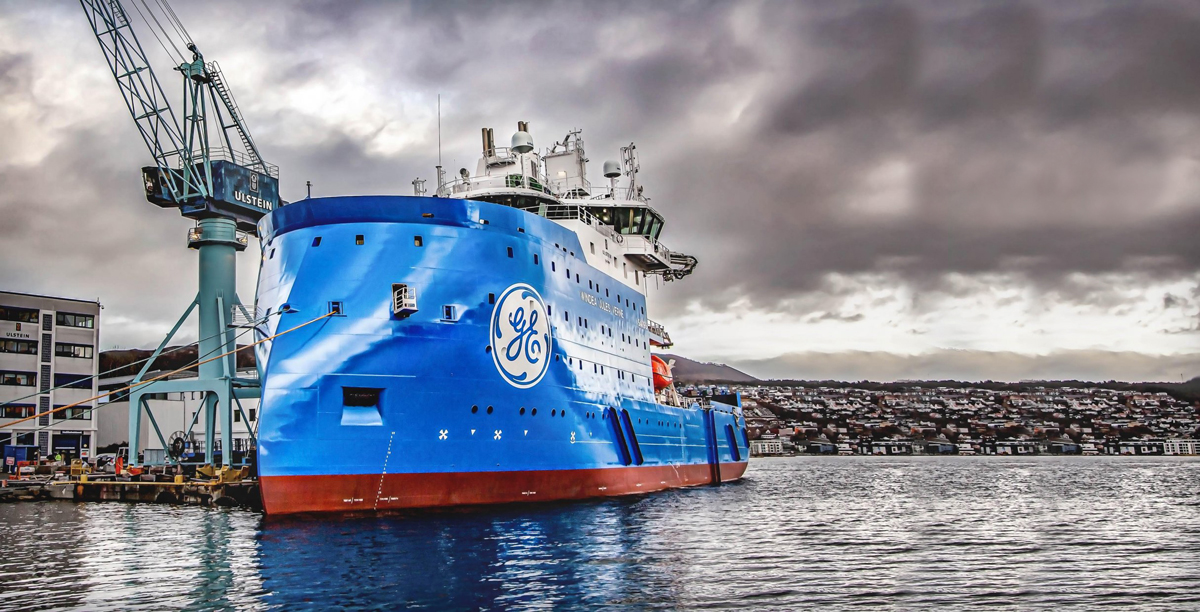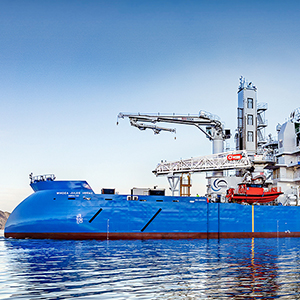What does the classic Twenty Thousand Leagues Under the Sea and BSM Offshore Services’ first ever hybrid drive Service Operation Vessel (SOV) have in common? Aside from being state-of-the-art like the famed Nautilus, BSM’s SOV is bestowed with the name of its author, Jules Verne. Named after one of the world’s most popular adventure writers, who was born in Nantes, France, which is exactly where the offshore wind business of GE Renewable Energy is located.
The Schulte Group is a pioneer in the area of SOVs, through the management of one of the first offshore vessels converted to an SOV as well as the ownership and management of two of the first purpose-built SOVs for the wind industry.
The organisation was awarded this project by GE Renewable Energy and the vessel was custom built to GE’s specific requirements by Ulstein Group. Ulstein is a specialist ship builder with utmost standards and track record. Having worked with the Schulte Group since 2014, SOV WINDEA Jules Verne is the third SOV vessel to be built.
Challenges faced
Commissioning and maintenance work on offshore wind farms are undertaken by wind technicians living and working on board the SOVs two weeks a stretch.
The SOV needs to be an all-in-one platform to support wind farm maintenance, operating to serve multi-purpose needs – doubling as accommodation quarters and as a warehouse for tools and spare parts.
Some of the key challenges in building SOVs include:
- Vessel movement needs to be stable while transferring personnel to turbines in challenging weather and sea conditions
- Fuel efficiency and emissions reduction for environmental sustainability
- Operational efficiency leading to many transfers of wind technicians in a short period of time
- High availability of the vessel to ensure high availability of wind turbine power plant
With a good understanding of the above challenges, the SOV has been intelligently designed to meet all of the customer’s requirements.
Smooth sailing
WINDEA Jules Verne has a large, centrally positioned walk-to-work motion-compensated gangway. This means the gangway remains balanced throughout, making it a safe and efficient way of crew transfer. There is also an elevator tower for personnel and cargo transfers.
Improved design for more fuel efficiency
A hybrid diesel-electric propulsion system is installed aboard the SOV, which means that it can switch to battery power to minimize fuel usage during energy demanding operations, such as Dynamic Positioning (DP) operations. Overall, fuel savings are expected to be between 5 to 10 percent from the hybrid drive installations.
An Ulstein designed X-STERN® hull which is shaped with a pointed end allows the vessel to move forward or backwards depending on the fastest way to the next turbine, further enhancing fuel efficiency. Ultimately, the improved hull design can improve the SOV’s weather resistance, allowing for greater operability as well as reduced power and fuel consumption while on DP compared to conventional sterns. There is also significant reduction in slamming and motion, increasing comfort and safety levels for those on board.
Operational efficiency
Another first for BSM is the 3D compensated crane on board of this SOV. Capable of 2-tonne cargo lifts, the 3D compensated technology can carry the load securely even during rough sea conditions. The optimised onboard logistics include large storage capacities, half of which are under a roof in a controlled environment, which includes a temperature and humidity controlled, covered warehouse below the deck with special stores for electronic parts, and a stepless approach to the offshore installations, by using an elevator from the warehouse to the gangway level.
Yet another innovation point is the area where the gangway and the DP operators sit. Away from conventional setup, the placement of the two operators sitting next to each other greatly enhances communication, safety and response time.
Crew welfare on board
Careful consideration has been given to meet the comfort needs of the maintenance crew. With tasteful designer interiors, the work areas are replicated to model closely to landbound offices with spacious seating and modern designs. In the “canteen” area, the layout is well-considered with restaurant-like furnishings, windows to allow sunlight into its interiors and restaurant quality food to keep the wind technicians well-fed and happy. There is even a cinema, a gym and a sauna on board. No elements were left out in the design stage to ensure comfort and safety of the crew on board.
The delivery of the vessel took place on the 24th of June and the BSM Offshore Services’ team proudly welcomed SOV Windea Jules Verne to its fleet.




